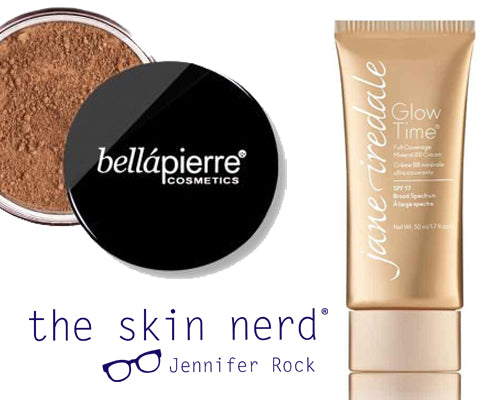
Mineral Makeup: FAQs and Why It's Good For Your Skin
What is mineral makeup?
Mineral makeup is an inert non-organic substance, meaning it is an anti-inflammatory and non-comedogenic substance which allows the skin to perform as normal while sitting under makeup. This is the difference between mineral makeup and traditional makeup, which can often block the secretions of the pores and cause blockages. The coverage of mineral makeup is buildable and the ingredients are kind to the skin as they are clean and free from fillers and filling agents, preservatives and fragrances.
How will it help my skin?
Mineral makeup has a multitude of benefits:
- It is anti-aging, due to the natural antioxidant qualities of some minerals
- It has hydrating qualities
- It has anti-inflammatory properties
- It has natural SPF benefits as added back up to your sunscreen
- It is non-comedogenic, meaning it will not clog your pores
Why does it matter – is makeup not different to skincare?
It is in many ways. If you opt for a traditional, mainstream makeup brand, its sole purpose is to camouflage and create an aesthetically pleasing skin. This means that it may not always be ingredient conscious and so mineral makeup provides the same coverage while is also mindful and respectful towards the skin.
Is it suitable for skin prone to acne or rosacea?
Yes, 100%! The joy is that you can layer the coverage with a smaller brush over a congested area, passport papule (meaning a spot big enough to have its own passport) or dilated redness.

Is there any skin they won’t work on?
Many believe it’s not suited to dry or mature skins as, typically, mineral makeup is a powder and many perceive it or imagine it to sit into the creases and to dry the skin out further. This is only the case if it isn’t a pure mineral. The key is choosing a product that uses only pure minerals, as they adhere to the skin and glaze over the dips and crevasses as opposed to sinking into them. Talc is deemed a mineral but is typically added to bulk the content out as opposed to serving a purpose. So if talc is in the product, it’s not false advertising but it is more likely to dry the skin out – think of the post-bath absorption rate of talc on wee bums!
What sort of coverage can I achieve with mineral makeup?
It can be applied loosely all over for the light look of a “dart to the shop” application right through to a tattoo cover, conceal all consistency.
What are your top tips?
The application is different to the norm. Allow a few practises at home or allow extra time in the morning when you first start to use it. Use a large, kabuki-style brush (ie. flat headed). Swirl the powder onto the brush, tap off the excess and apply in downward motions – minerals are such fine particles that if you buff them too much they become dewy, which is fine if desired! Also, if swirled, I find they catch under fine vellus hair so by applying downwards, this cannot happen. The joy of applying mineral makeup is that there is no tide line. If you apply 17 layers to cover one spot, it isn’t obvious like it would be if you were to use a liquid concealer so it is actually an easier process for the not too practised make-up applier.
Anything else you always tell people about mineral makeup that you feel is important to mention?
For those of you that are investing in a serious AM and PM skincare regime, you may boast about all you do to maintain your skin health. But ask yourself how many hours do you wear makeup for? 8, 9, or even 10? For that reason, make sure you are investing in a makeup that is acting as skincare as well, rather than solely as camouflage. Otherwise, you are to some degree defeating the purpose of your skincare regime by adding ingredients that are not, for example, anti-aging, pigment-inhibiting or anti-inflammatory.
